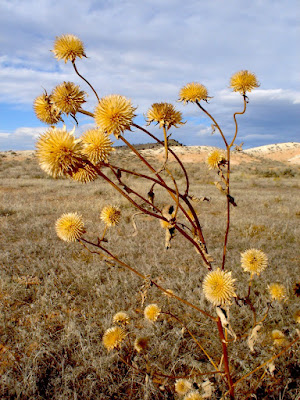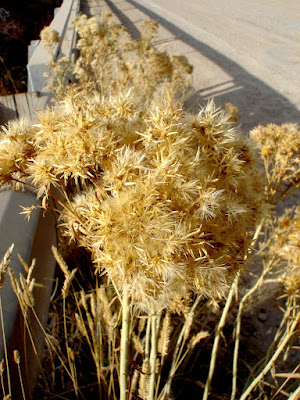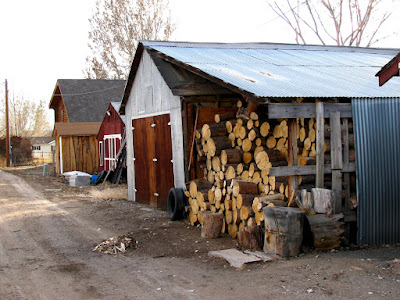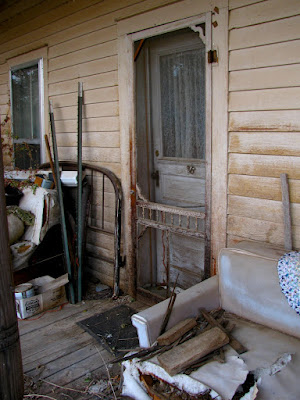

 This is Burralo Creek Road which connects Lower Nowood Road with Ten Sleep-Hyattville Road:
This is Burralo Creek Road which connects Lower Nowood Road with Ten Sleep-Hyattville Road:
 The red sign on the right (below) directs the traveller back to Ten Sleep along Ten Sleep-Hyattville Road. Click here for a satellite map of this junction.
The red sign on the right (below) directs the traveller back to Ten Sleep along Ten Sleep-Hyattville Road. Click here for a satellite map of this junction.

 This used to be a school but is now the Community Center.
This used to be a school but is now the Community Center.

 Below is the interior of what appeared to be the school's kitchen.
Below is the interior of what appeared to be the school's kitchen.Samuel W. Hyatt moved to a settlement near the confluence of Paint Rock Creek and Medicine Lodge Creek in 1866 to establish a mercantile business. The tiny community was originally called Paintrock, in reference to prehistoric Indian pictographs and petroglyphs on the nearby Medicine Lodge Creek cliffs. Recognizing the need for an established townsite, Mr. Hyatt laid out the town, which was subsequently named Hyattville in his honor, in 1887. S.W. Hyatt was the first and only postmaster in the Big Horn Basin in 1887, and he soon established mail routes that lead to Hyattville becoming the distribution point for all mail coming over the mountains from Buffalo, Wyoming. Mail arrived three times a week.
Hyatt also worked closely with Governor DeForest Richards to establish a school system. Soon Hyattville had the first school in the section, four general stores, two saloons, a livery stable and a hotel. In 1892, Mr. Tom Gebhart established the town's first newspaper, The Paintrock Record. After the turn of the century, Hyattville's citizens expressed a desire to bring cultural events to the community. In 1910, an opera house was built on land purchased from Mr. Hyatt. Asa Mercer, one of the town's most famous early residents, spoke at the dedication of the opera house. Mercer is best known as the author of The Banditti of the Plains, a controversial book about the Johnson County War.
Hyattville is nestled in the western foothills of the southern Big Horn Mountains, just below the pristine Cloud Peak Wilderness area. Primarily a ranching community, it is also a popular recreational area, offering hunting, fishing, trail riding, and winter sports.




 The following photographs are from the north end of Hyattville.
The following photographs are from the north end of Hyattville.


 The small brick wall houses the mechanisms for the lawn sprinkler.
The small brick wall houses the mechanisms for the lawn sprinkler.




 The sun was setting, so we stayed to see its beauty. The first shot is looking west, and the next two look east at the reflection of the setting sun on the clouds.
The sun was setting, so we stayed to see its beauty. The first shot is looking west, and the next two look east at the reflection of the setting sun on the clouds.link: index to photographs

















































3 comments:
It's cool to see the photos...My grandparents used to own a store in Hyattville. My dad and his siblings grew up there. I was looking for the opera house that was listed on the sign. I don't know if that building is still standing...if so, I would be interested to know which one it is,
It's cool to see the photos...My grandparents used to own a store in Hyattville. My dad and his siblings grew up there. I was looking for the opera house that was listed on the sign. I don't know if that building is still standing...if so, I would be interested to know which one it is,
Beautiful photos!! Brings back a lot of memories. Especially the school where there were 6 of us in 1st thru 3rd grade. Days building snow forts on the playground and eating in the kitchen where Katie cooked up homemade meals for all of us kids.
Post a Comment